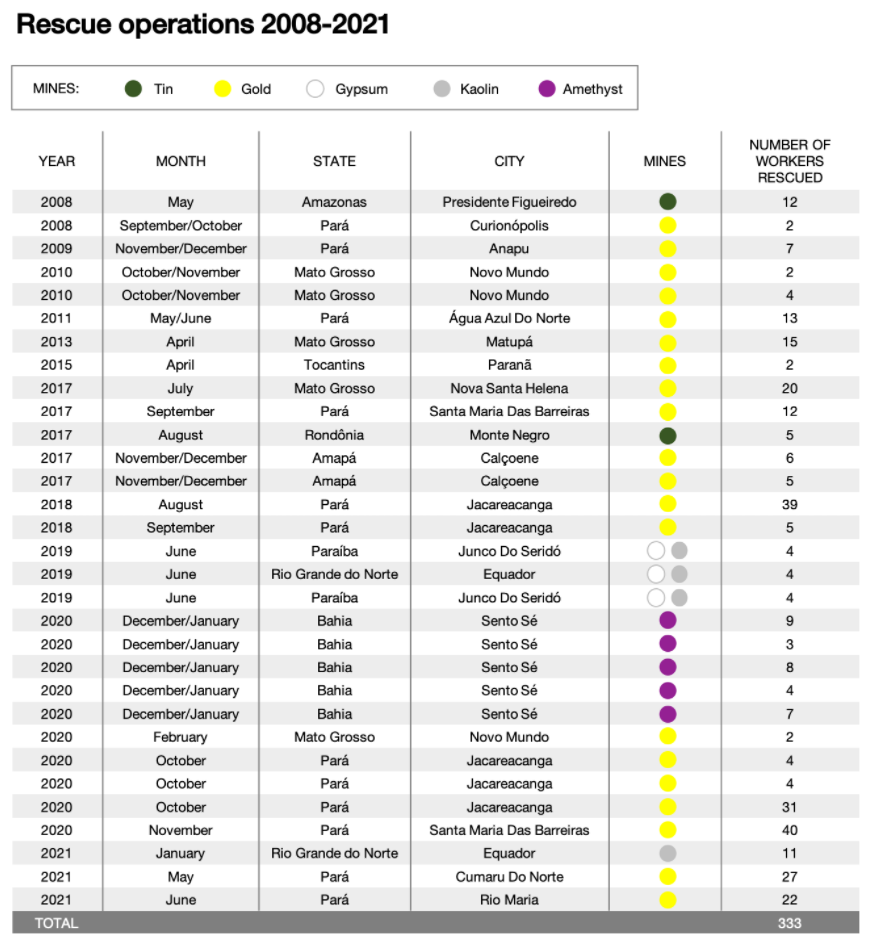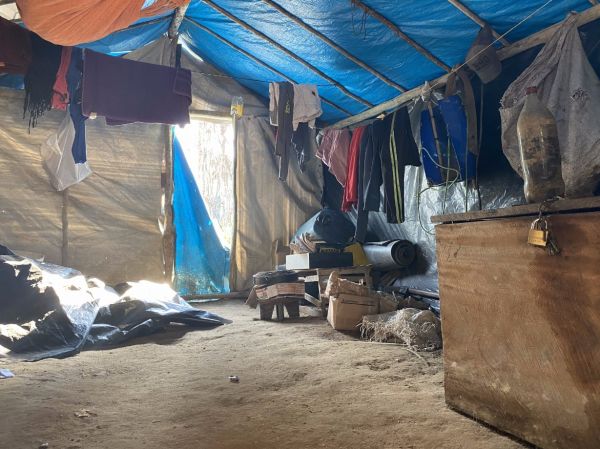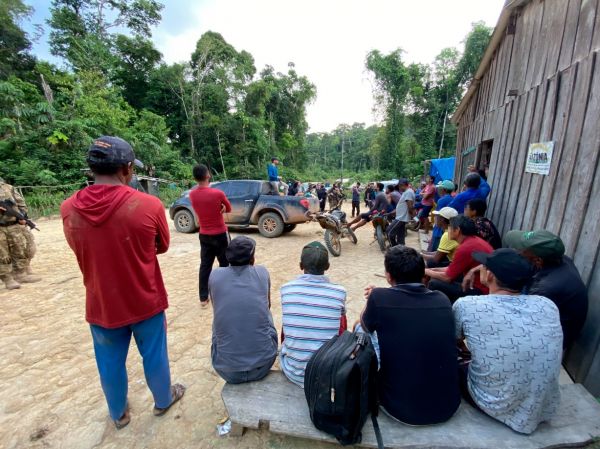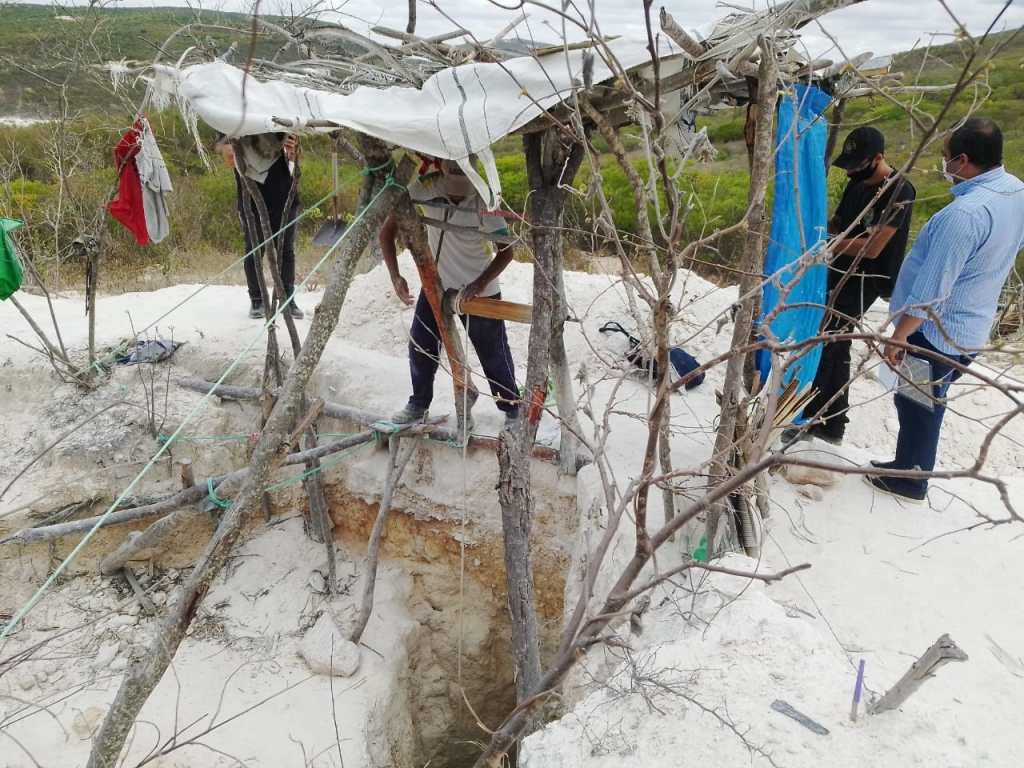An exclusive report by the Mining Observatory shows that, since 2008, 333 workers have been rescued in mines in Brazil under slave-labor conditions. There were 31 operations that had mining as their focus in the last 13 years. The extent of these rescues had never been revealed before.
Pará is the leading state by a large margin, with 12 operations. The inspections took place mainly in the Amazon and in the Northeast, in the states of Amazonas, Amapá, Rondônia, Mato Grosso, Bahia, Paraíba and Rio Grande do Norte.
In common, workers are found in precarious conditions, without adequate accommodation facilities, without bathrooms, consuming contaminated water, with improvised food, without protective equipment, on exhausting journeys, without formal employment and, often, subjected to accumulated debts with the owner of the “garimpo”, most of them illegal mines —situations that configure slave-labor conditions under brazilian law.
In mining, it is gold that leads the incidence of such cases, followed by the extraction of precious stones — such as amethyst —, kaolin, plaster and tin.

Inspection grows, but lacks structure
Previously almost off the radar, it was from 2017 onwards that garimpos became a focus and operations increased significantly. Last year, twice as many operations were carried out (10) than in 2017 (5), for example. Three have been held this year so far.
The move was chosen by the Special Mobile Inspection Group, says Magno Riga, coordinator of the GEFM: “It was an institutional decision. We started to look more closely at mining and prioritize operations.”
Unlike cattle-raising and other activities, garimpos are not usually the target of allegations of slave labor made to auditors, says the coordinator of the Mobile Group.

Thus, it is necessary to structure an intelligence work to seek information, build cases, receive reports from environmental agencies such as IBAMA and ICMBio (Chico Mendes Institute for Biodiversity Conservation) and establish partnerships with the Federal Police, which participate in the operations.
“We have a lot of logistical difficulties, especially in operations that require longer and more complex displacements, with airborne support. The Federal Police has been a great partner in this process, not least because of the risk that agents run in the field. These are areas of conflict”, says Magno Riga, coordinator of the Special Mobile Inspection Group.
Warlei Dias, Federal Police chief in Brasília and head of the Forced Labor Repression Nucleus, says that the PF has sought to articulate its own actions in different states and support partners such as the Mobile Group, the Public Ministry of Labor (MPT), the Federal Prosecutor’s Office, Ibama and others.
Illegal mining is usually accompanied by other crimes, such as illegal deforestation, illegal possession of weapons and formation of criminal networks. Slave labor enters this context, says Dias.
“Over the course of these operations over the past few years, we’ve seen criminals increasingly using slave-labor. Because they manage, with this practice, to make that illegal activity, which was already profitable, even more profitable”, says Warlei Dias, head of the Center for the Repression of Forced Labor.
Garimpos have a sophisticated way of working
Two workers rescue operations carried out in 2018 and 2020 took place in mines maintained by the same owner, Raimunda Nunes Oliveira. The 77 workers rescued in Pará in these operations illustrate how the system has worked and the difficulties in preventing crimes from happening again. At the time, Raimunda’s lawyer said she would not speak out.
In these cases, detailed in a report by Mongabay, a partner of the Observatory, even after the 2018 operation, the mine owners — Raimunda and his sons — managed to register and approve mining applications at the National Mining Agency. They also filed 11 Rural Environmental Registry (CAR) records in their names.
The registration of applications with the ANM is part of the sophistication of the crime, which also included the creation, in 2020, of an alleged cooperative of miners in Pará, with Raimunda as president and his sons as directors.
The “cooperative” would be a way of masking the real conditions of the workers, in addition to trying to sell the idea that the miners were organized on their own.
In most cases, however, the garimpos do not even have formal registration. Many are within indigenous lands and conservation areas.

Less civil servants, less operations
Special Mobile Inspection Group and the PF have been trying to establish a joint schedule of operations that, however, runs up against the pandemic and the lack of civil servants. The last big job auditor contest was in 2010, when 400 workers entered. Currently, a competition from the PF foresees the inclusion of 1,500 new civil servants, and another approximately 500 may be created in the next semester for the administrative area of the agency.
On average, between 100 and 150 labor auditors retire every year. There were 1,000 retirements in ten years, without adequate replacement. Today, there are about 2,000 auditors to inspect all of Brazil.
“Most are in remote or indoor activity because of the pandemic. Over the last 25 years, this is certainly the time when we have the fewest auditors in the field”, says Magno Riga, coordinator of the Special Mobile Inspection Group
There are only 17 auditors divided into 4 teams in the Special Mobile Inspection Group, the same staff as a decade ago. The situation in the Regional Labor Superintendencies is even worse, says the head of the GEFM. Today, any citizen can submit complaints through the Ipê System, launched in 2020.

More bureaucracy
In addition to the lack of staff, auditors face bureaucracy. With the extinction of the Ministry of Labor by Jair Bolsonaro (without party), the Mobile Group is now linked to the Ministry of Economy. This change has increased the bureaucracy for operations to take place, says Magno Riga.
“We lost autonomy. Now we need to inform more in advance and a series of procedures has become more difficult. We are strangled,” he says.
Wallace Lopes, Ibama’s federal environmental agent and director of the National Association of Environmental Specialist Career Servants (Ascema), says that integrated operations are essential in the case of garimpos.
Resuming the Action Plan for the Prevention and Control of Deforestation in the Legal Amazon (PPCDAM), created in 2004 and abandoned by the current government, for example, is a path pointed out to solve the problem.
According to delegate Warlei Dias, the Federal Police has increased the number of operations in local or interstate articulations and the intelligence work involves the more intensive use of satellite images, for example. When a field operation identifies workers in slave-labor conditions, partner institutions are called upon.
Once rescued, workers receive minimum rights, such as payment of severance pay, unemployment insurance, shelter at social assistance centers and assistance to return to their place of origin, if they have also been victims of human trafficking.
A study by the Slave Labor and Trafficking in Persons Clinic (CTETP) of the Federal University of Minas Gerais (UFMG) showed that only 4.2% of all those accused were held criminally responsible for the crime of subjecting workers to contemporary slavery in Brazil.
Descubra mais sobre Observatório da Mineração
Assine para receber nossas notícias mais recentes por e-mail.





